Iconic racing cars with flawless designs have left a lasting impact on both the automotive industry and motorsport history. These vehicles combine exceptional aesthetics with engineering precision, delivering not only high performance but also captivating designs that are instantly recognizable. In this article, we’ll explore some of the most iconic racing cars with flawless designs. These cars represent the perfect balance of beauty and speed, becoming symbols of racing excellence that continue to inspire enthusiasts and designers alike.
Contents
Ferrari 250 GTO (1962)
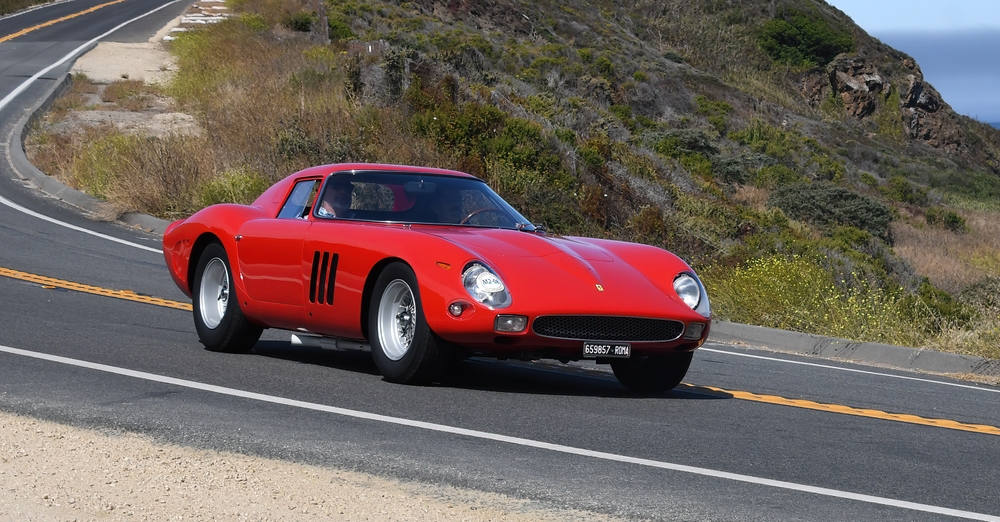
The Ferrari 250 GTO is one of the most iconic racing cars in history, known for its beautiful design and impressive performance. Only 36 units were produced, making it one of the most valuable and rarest cars in the world. Powered by a 3.0-liter V12 engine that produces 296 horsepower, the GTO could reach a top speed of 174 mph. Its aerodynamic design, with smooth, flowing lines and a long hood, was ahead of its time. The Ferrari 250 GTO has sold at auctions for as much as $70 million, making it not just an icon but a record-breaker in the automotive world.
Porsche 917 (1969)
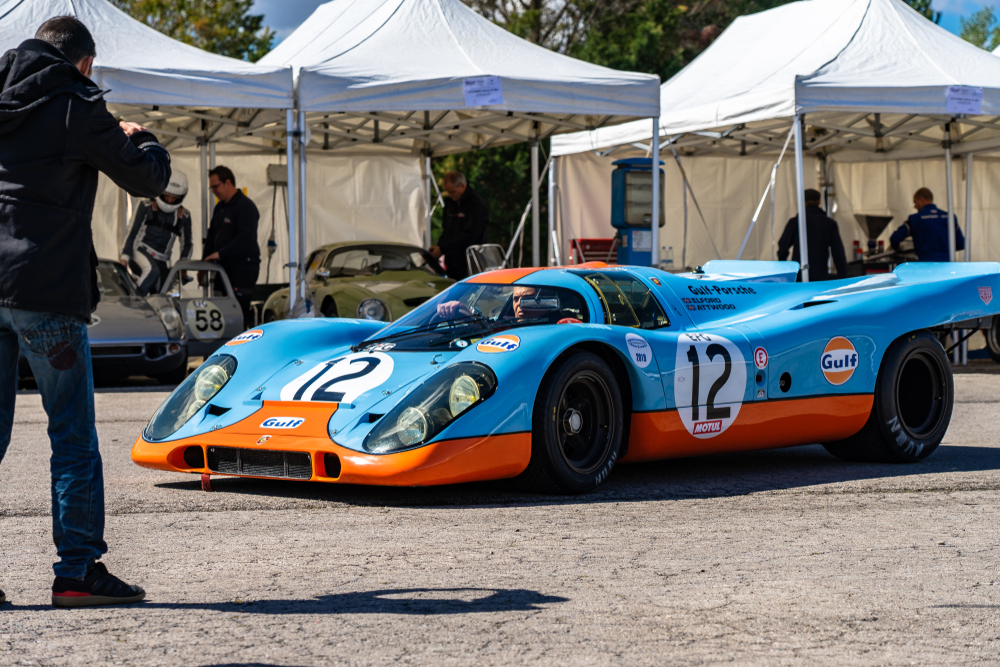
The Porsche 917 is a legendary endurance race car that dominated the 24 Hours of Le Mans in the early 1970s. Its design was revolutionary, with an ultra-lightweight chassis and a sleek, low-slung body that optimized aerodynamics. Powered by a flat-12 engine producing up to 1,100 horsepower in some configurations, the 917 could reach speeds over 240 mph. The 917’s flawless design contributed to Porsche’s first overall victory at Le Mans in 1970 and cemented its place as one of the most iconic race cars. Original 917 models are valued at over $14 million today.
McLaren F1 (1992)
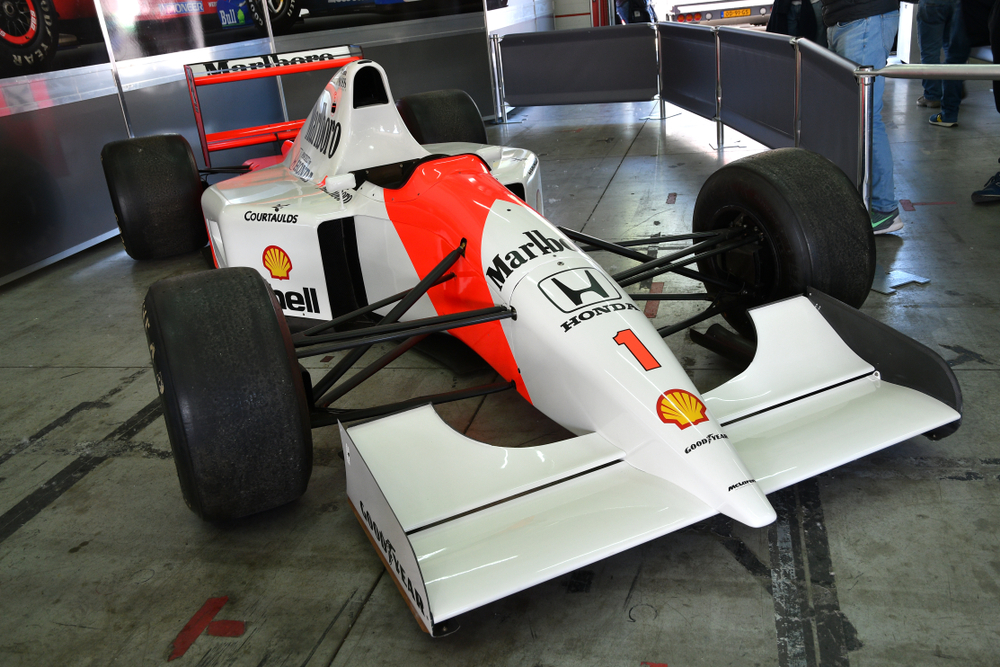
The McLaren F1 is often regarded as the ultimate supercar, blending cutting-edge technology with timeless design. Designed by Gordon Murray, the F1 features a unique three-seat layout with the driver in the center. Its lightweight carbon fiber body and naturally aspirated 6.1-liter V12 engine, producing 627 horsepower, allowed the car to reach a top speed of 240 mph, making it the fastest production car in the world at the time. With only 106 units produced, the McLaren F1 remains a highly sought-after collector’s car, often fetching upwards of $20 million at auctions.
Jaguar E-Type (1961)

The Jaguar E-Type is often hailed as one of the most beautiful cars ever made, with its long, curvaceous body and sleek lines. Designed by Malcolm Sayer, the E-Type was not just a design icon but also a performance powerhouse. Powered by a 3.8-liter inline-six engine producing 265 horsepower, the E-Type could reach 150 mph, a remarkable feat for its time. With a price tag of around $5,000 when new, the E-Type was relatively affordable compared to its exotic counterparts. Today, it’s considered one of the most iconic sports cars, with pristine examples fetching up to $200,000.
Ford GT40 (1964)
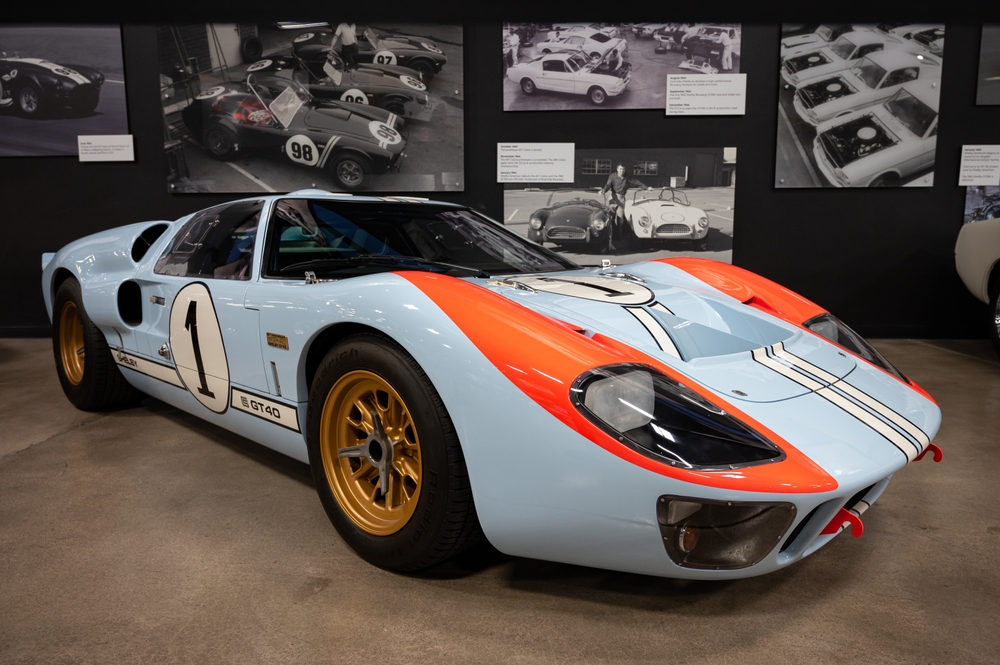
The Ford GT40 was designed to take on Ferrari at the 24 Hours of Le Mans, and it succeeded by winning the race four times consecutively from 1966 to 1969. The GT40’s low-slung, aerodynamic design was built for high-speed endurance racing, and it was powered by a range of V8 engines, with the most powerful producing over 485 horsepower. The car’s flawless design, with its aggressive stance and smooth curves, made it an instant icon in motorsport history. Original GT40s are now valued at millions, with some models selling for over $10 million at auction.
Audi Quattro (1980)
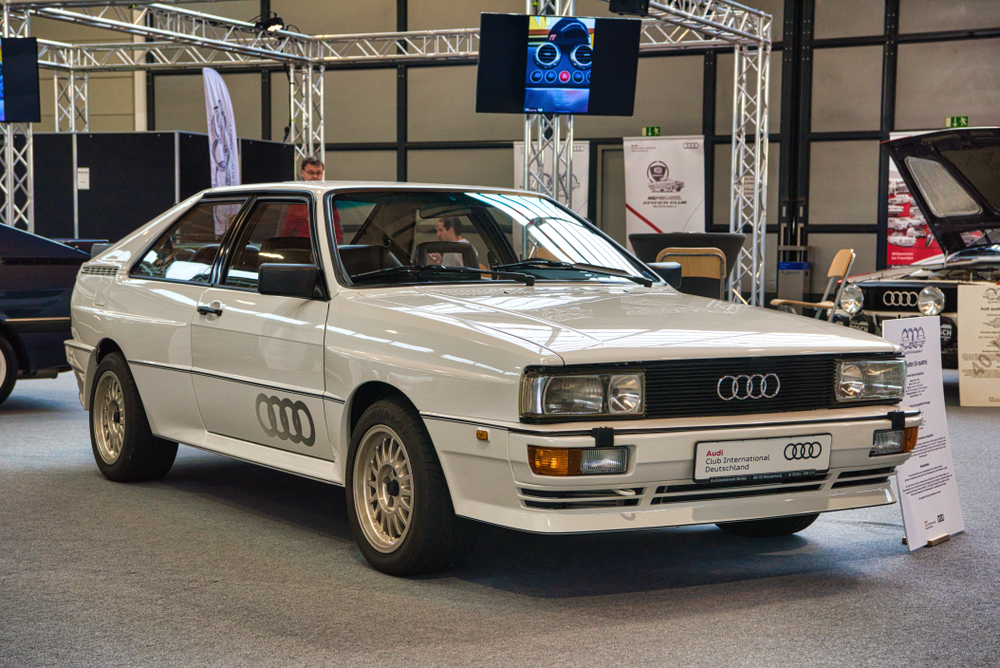
The Audi Quattro revolutionized rally racing with its introduction of permanent all-wheel drive in a road-going car. Its boxy design, wide fenders, and aggressive stance became instantly recognizable. Powered by a turbocharged 2.1-liter inline-five engine producing 197 horsepower, the Quattro dominated rally championships throughout the 1980s. The car’s handling and grip on all surfaces, from gravel to tarmac, set new standards in racing. Audi’s Quattro technology continues to influence modern all-wheel-drive systems, and original rally-spec Quattros are prized by collectors, often fetching upwards of $400,000.
Shelby Cobra 427 (1965)
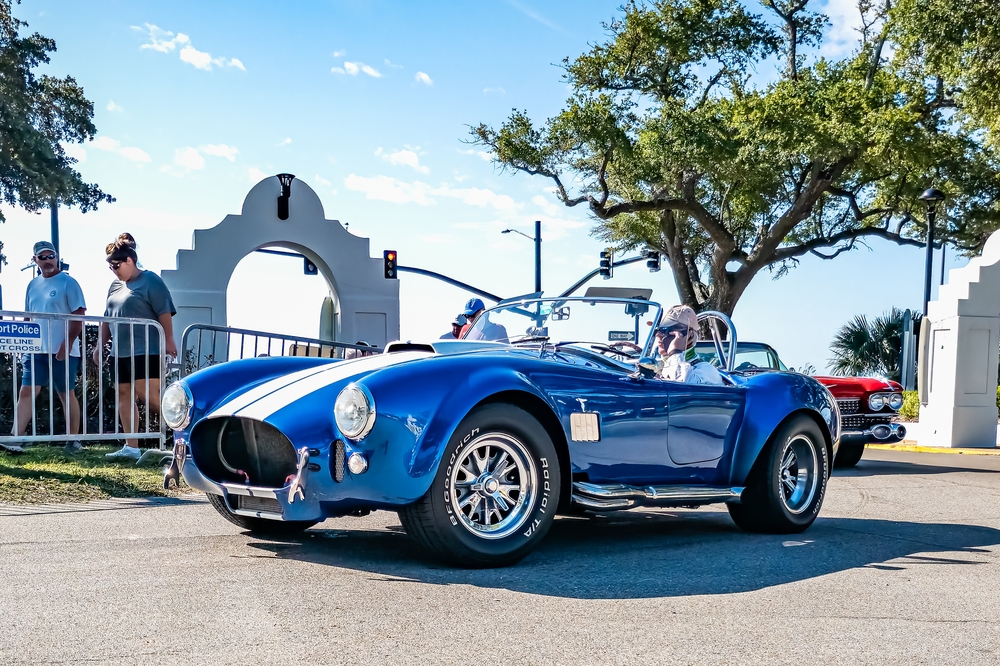
The Shelby Cobra 427 is a legendary American muscle car with British origins, blending a lightweight body with a massive 7.0-liter V8 engine that produced 425 horsepower. Its muscular design, with wide fenders and a low profile, was iconic on the racetrack. The Cobra 427 could accelerate from 0 to 60 mph in under four seconds, making it one of the fastest cars of its time. Original models of the Shelby Cobra are extremely rare and highly sought after, with some examples selling for over $5 million at auction.
Mercedes-Benz 300SL Gullwing (1954)
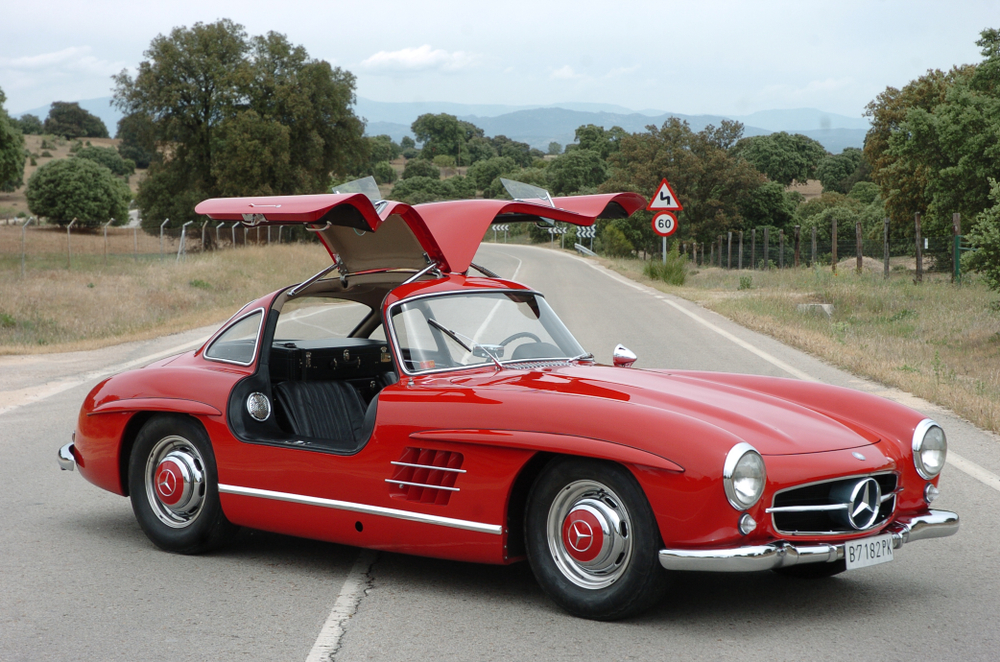
The Mercedes-Benz 300SL Gullwing is instantly recognizable thanks to its iconic upward-opening doors, which were a solution to its unique spaceframe design. Powered by a 3.0-liter straight-six engine with direct fuel injection, the 300SL produced 215 horsepower and could reach a top speed of 161 mph, making it the fastest production car of its time. Its flawless design and cutting-edge technology made the 300SL a favorite among racers and collectors. Today, original 300SL Gullwing models are some of the most valuable classic cars, often selling for over $1 million.
Ferrari F40 (1987)

The Ferrari F40 was the last car commissioned by Enzo Ferrari before his death, and it remains one of the most iconic supercars ever built. With a twin-turbocharged 2.9-liter V8 engine producing 471 horsepower, the F40 was capable of reaching 201 mph, making it the first production car to break the 200 mph barrier. Its design featured a lightweight carbon fiber body, massive rear wing, and aggressive aerodynamics, all contributing to its legendary status. Originally priced at around $400,000, the Ferrari F40 is now a coveted collector’s item, with values exceeding $2 million.
Lotus 49 (1967)
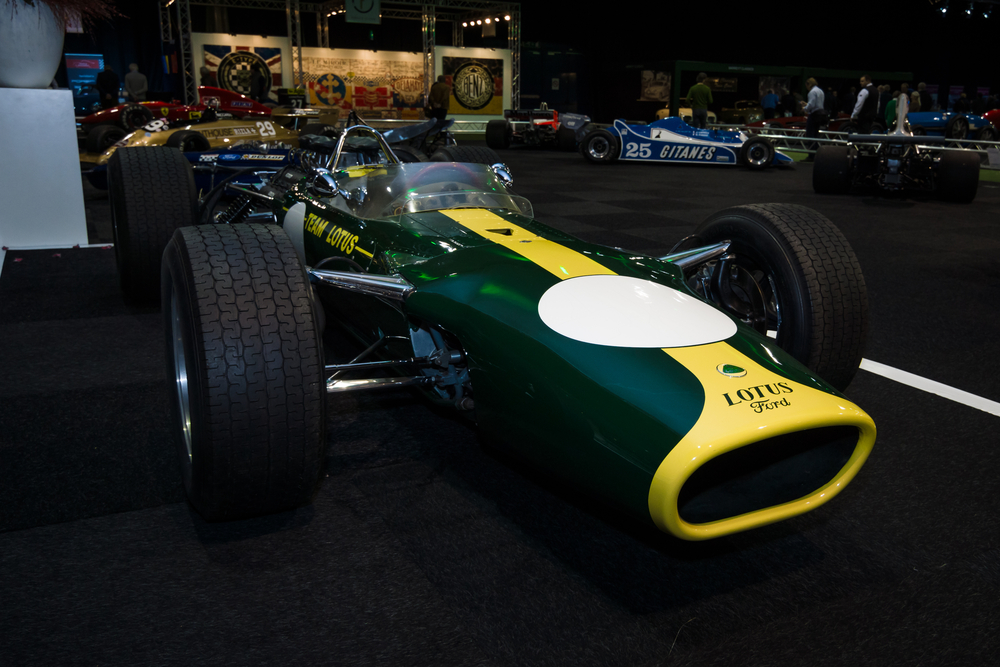
The Lotus 49 is a Formula 1 car designed by Colin Chapman and is famous for its revolutionary design, which used the engine as a stressed member of the chassis. Powered by the Cosworth DFV engine, which produced around 410 horsepower, the Lotus 49 was both lightweight and powerful, helping it achieve significant success in Formula 1 racing. Its sleek, minimalistic design prioritized aerodynamics and efficiency, setting a new standard in motorsport engineering. The Lotus 49’s design continues to influence modern race car development, and original examples are prized by collectors and museums.
Porsche 911 Carrera RS 2.7 (1973)
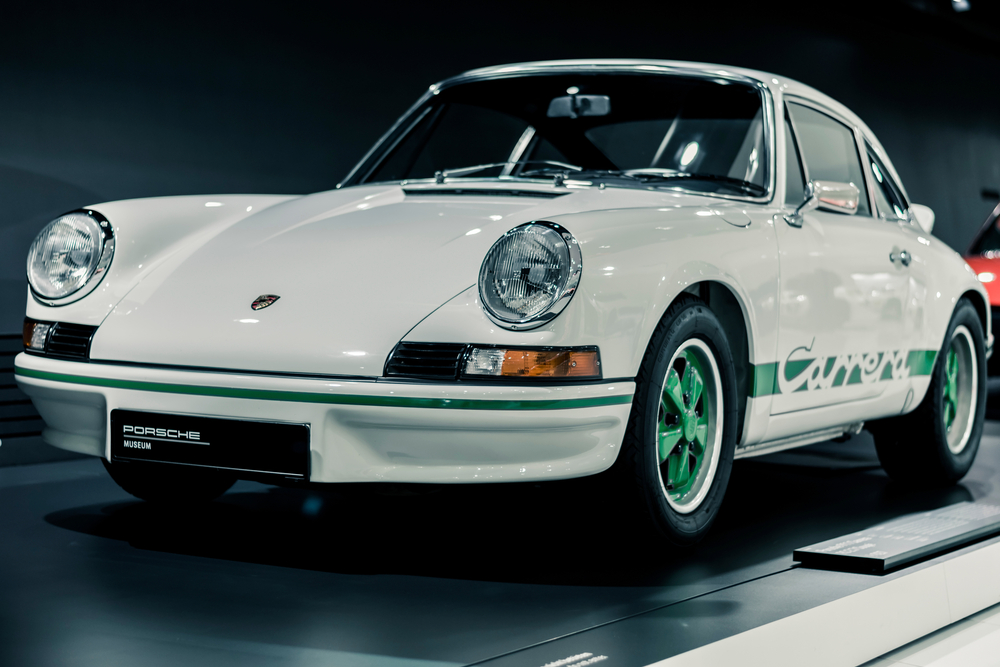
The Porsche 911 Carrera RS 2.7 is one of the most iconic 911 models ever built, known for its distinctive ducktail spoiler and lightweight design. Powered by a 2.7-liter flat-six engine producing 210 horsepower, the RS 2.7 was built for racing but also became a popular road car. Its flawless design combined aerodynamics with practicality, making it a favorite among both racers and enthusiasts. The RS 2.7 is now one of the most valuable classic 911s, with well-preserved examples selling for over $1 million.
Alfa Romeo 33 Stradale (1967)
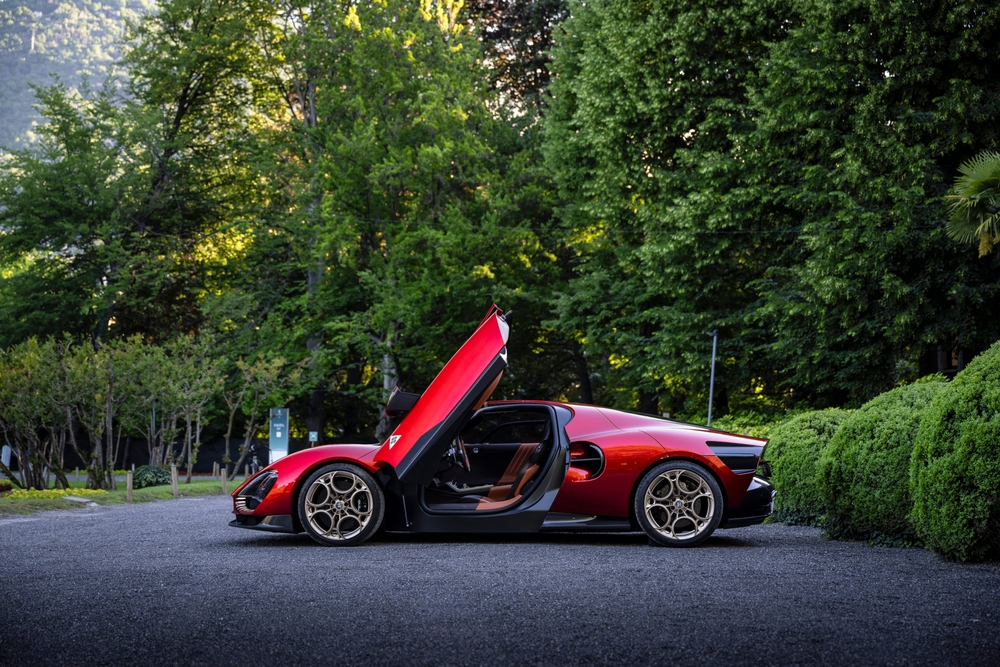
The Alfa Romeo 33 Stradale is one of the most beautiful and rarest sports cars ever made, with only 18 units produced. Powered by a 2.0-liter V8 engine producing 230 horsepower, the 33 Stradale could reach a top speed of 160 mph. Its design, with its flowing lines and gullwing doors, was inspired by Alfa Romeo’s racing cars, and it remains a masterpiece of automotive design. The 33 Stradale is highly sought after by collectors, with values exceeding $10 million due to its rarity and stunning design.
BMW M1 (1978)
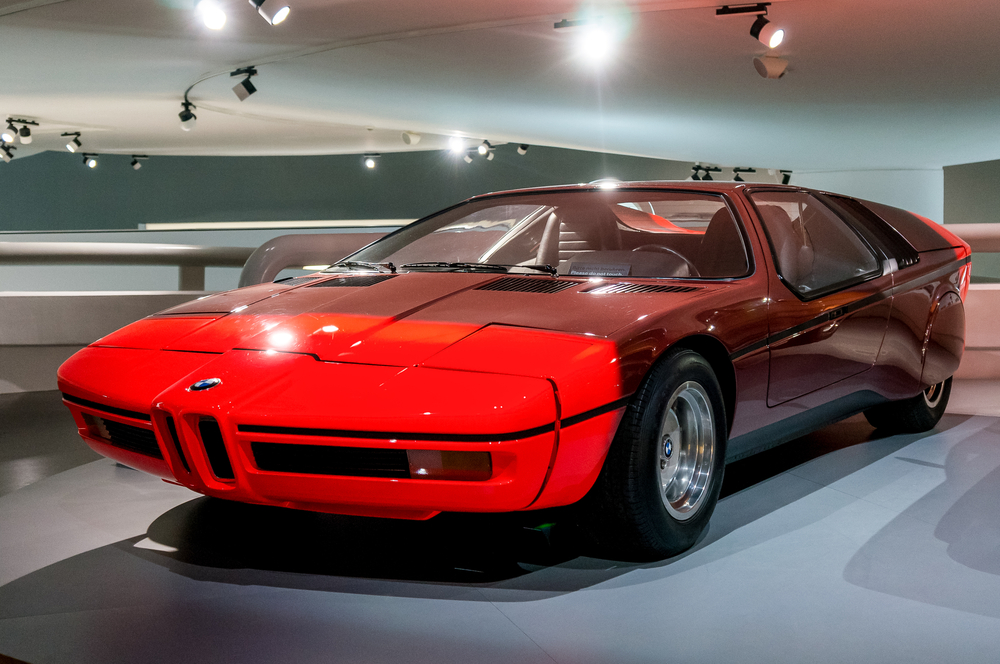
The BMW M1 was BMW’s first and only mid-engine supercar, designed for both the road and racing. Powered by a 3.5-liter inline-six engine producing 273 horsepower, the M1 could reach a top speed of 162 mph. Its wedge-shaped design, created by Giorgetto Giugiaro, became an instant icon, combining sharp lines with aerodynamic efficiency. The M1’s flawless design and rarity have made it a highly desirable collector’s car, with prices for well-preserved examples reaching over $600,000.
Lancia Stratos (1973)
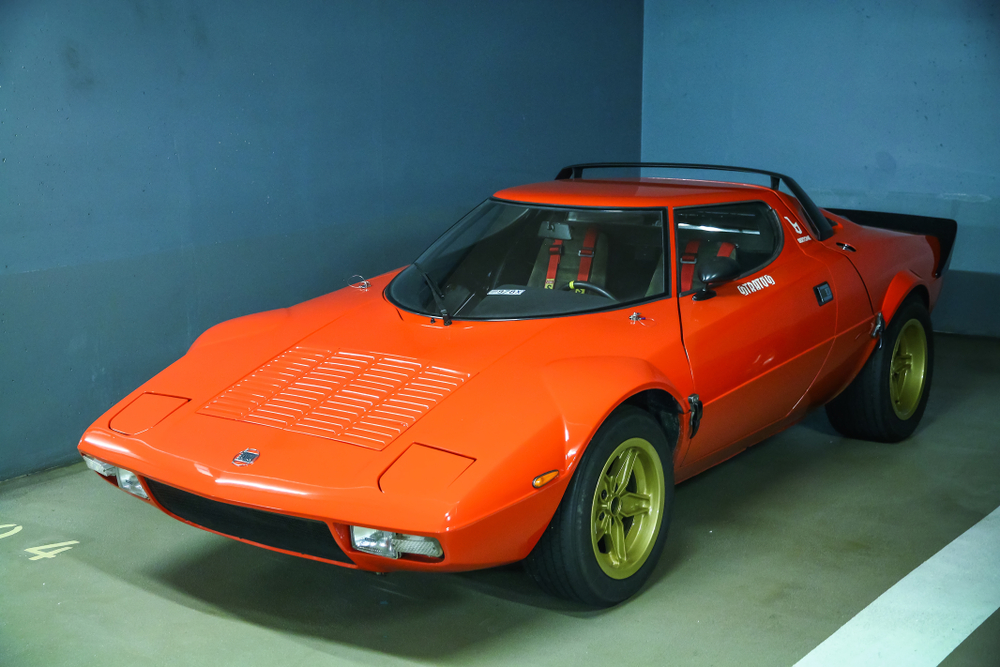
The Lancia Stratos is one of the most successful rally cars of all time, known for its unique wedge-shaped design and mid-engine layout. Powered by a 2.4-liter V6 engine derived from Ferrari, the Stratos produced 190 horsepower and excelled in rally racing due to its lightweight construction and exceptional handling. Its aggressive, angular design made it a standout on the rally circuit and a favorite among collectors. The Lancia Stratos is now a highly valuable classic, with auction prices often exceeding $500,000.
Aston Martin DBR1 (1956)

The Aston Martin DBR1 is one of the most iconic racing cars ever built, famous for winning the 1959 24 Hours of Le Mans. Powered by a 3.0-liter inline-six engine, the DBR1 produced around 250 horsepower and was designed for endurance racing. Its sleek, aerodynamic body and lightweight construction made it highly competitive on the track. The DBR1’s flawless design and racing pedigree have made it one of the most valuable Aston Martins, with one example selling for over $22 million at auction.
Maserati 250F (1954)
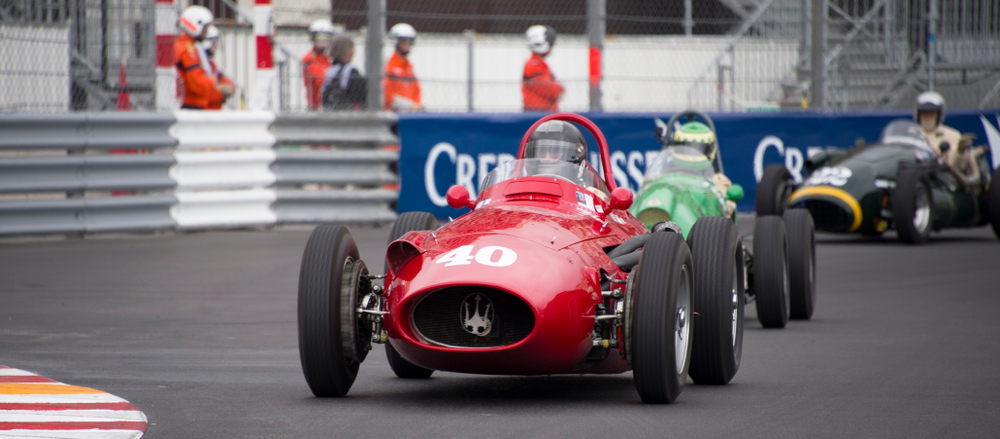
The Maserati 250F is considered one of the most beautiful and successful Formula 1 cars of its era. Powered by a 2.5-liter inline-six engine producing around 270 horsepower, the 250F had a lightweight tubular frame and an aerodynamic body, making it highly competitive in the 1950s. The 250F’s graceful design and racing success, including victories by legends like Juan Manuel Fangio, have made it one of the most iconic Formula 1 cars. Original examples of the 250F are highly prized by collectors and can sell for over $5 million.
Bugatti Type 35 (1924)
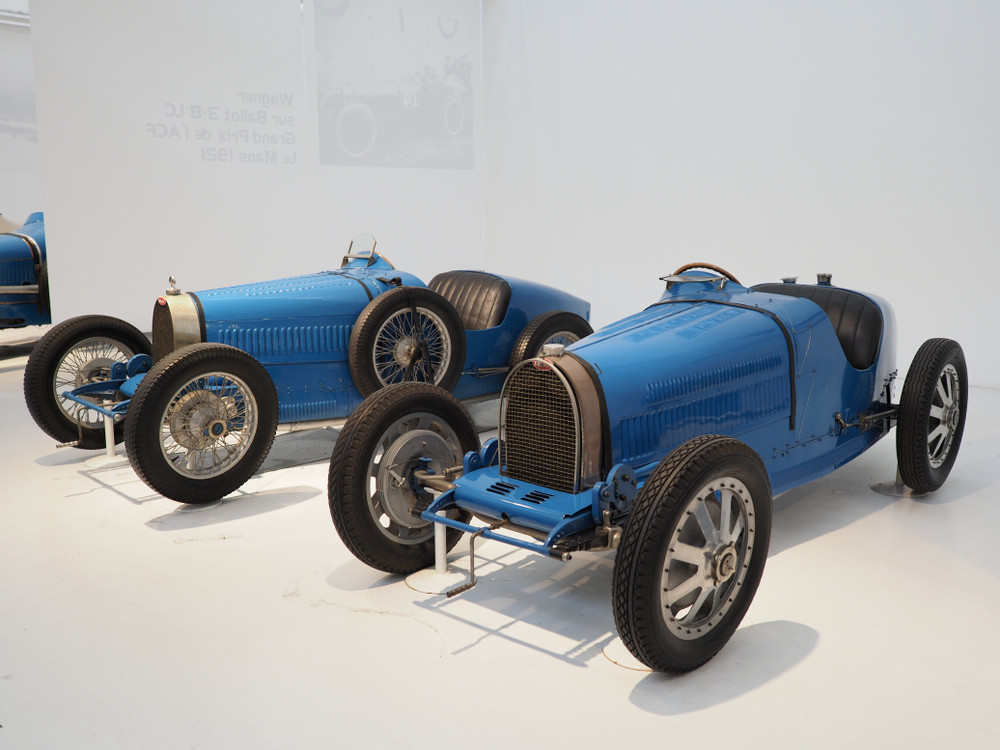
The Bugatti Type 35 is one of the most successful racing cars of all time, known for its elegant design and innovative engineering. Powered by a 2.0-liter inline-eight engine, the Type 35 produced around 90 horsepower and dominated Grand Prix racing in the 1920s. Its lightweight construction and distinctive horseshoe grille made it an icon of early motorsport. The Bugatti Type 35’s flawless design and racing heritage have made it one of the most valuable pre-war cars, with some examples selling for over $2 million.
Mercedes-Benz W196 (1954)
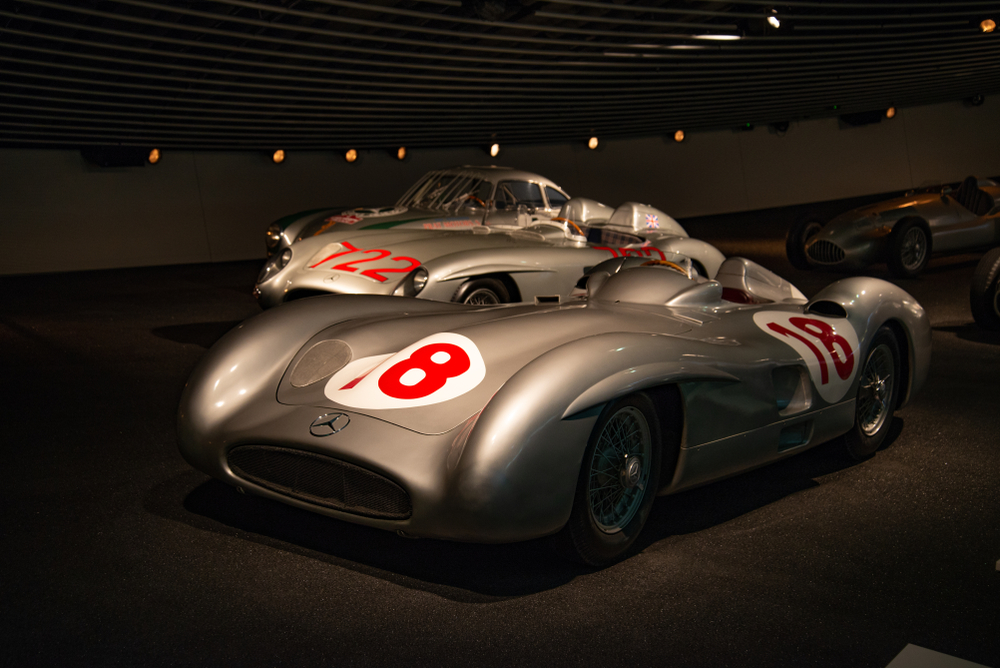
The Mercedes-Benz W196 is a legendary Formula 1 car that dominated the sport in the mid-1950s. Powered by a 2.5-liter straight-eight engine, the W196 produced 290 horsepower and featured advanced technology like desmodromic valves and direct fuel injection. Its streamlined design, which included both open-wheel and enclosed body styles, set new standards in aerodynamics. The W196’s racing success, with drivers like Juan Manuel Fangio behind the wheel, has made it one of the most iconic racing cars in history. One example sold at auction for over $29 million, making it one of the most expensive cars ever.
Nissan Skyline GT-R R34 (1999)
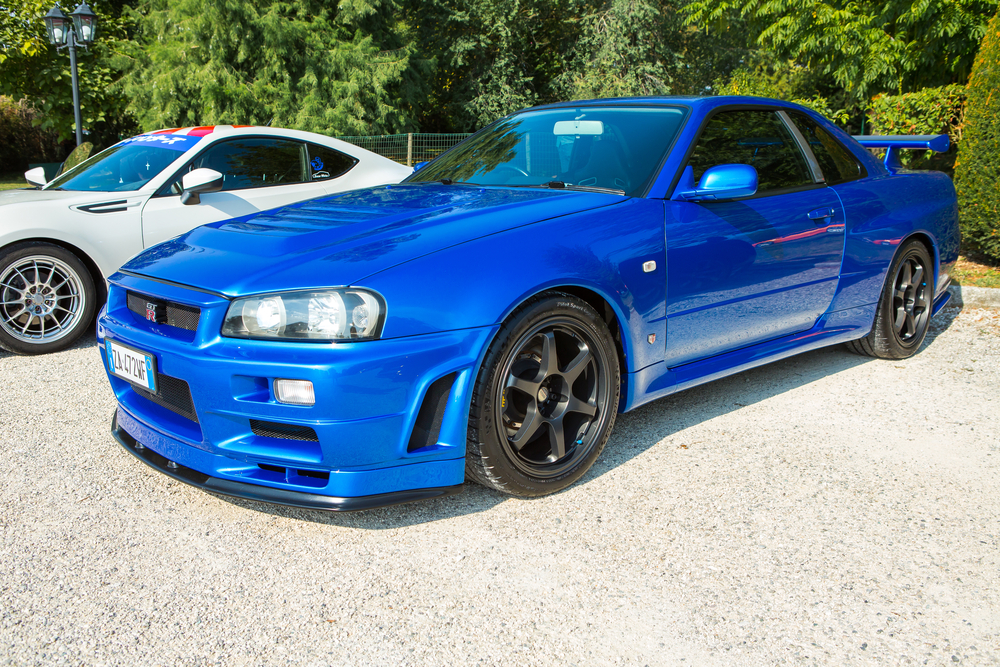
The Nissan Skyline GT-R R34 is an icon of Japanese car culture and motorsport, known for its advanced technology and flawless design. Powered by a 2.6-liter twin-turbo inline-six engine producing 276 horsepower, the R34 GT-R featured Nissan’s ATTESA E-TS all-wheel-drive system and advanced aerodynamics. Its aggressive design, combined with cutting-edge technology, made it a favorite among tuners and racers alike. The R34 GT-R has gained legendary status in the automotive world, with values for well-preserved examples reaching over $200,000.
Chevrolet Corvette C2 Stingray (1963)
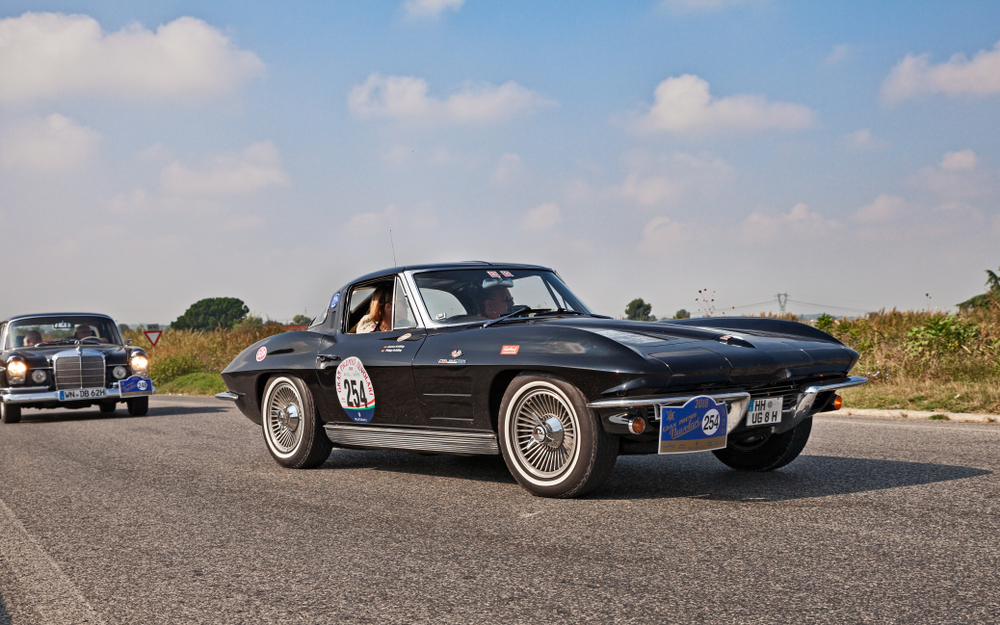
The Chevrolet Corvette C2 Stingray is one of the most iconic American sports cars, known for its distinctive split rear window and sleek, aggressive design. Powered by a range of V8 engines, the C2 Stingray could produce up to 360 horsepower, making it a powerful competitor on the track. Its flawless design, with its sharp lines and aerodynamic features, made it a standout in both racing and road use. The Corvette C2 Stingray remains a highly desirable classic, with values for well-preserved examples reaching over $100,000.
This article originally appeared on MyCarMakesNoise.
More from MyCarMakesNoise
Top 20 Modifications to Boost Your Bike`s Speed
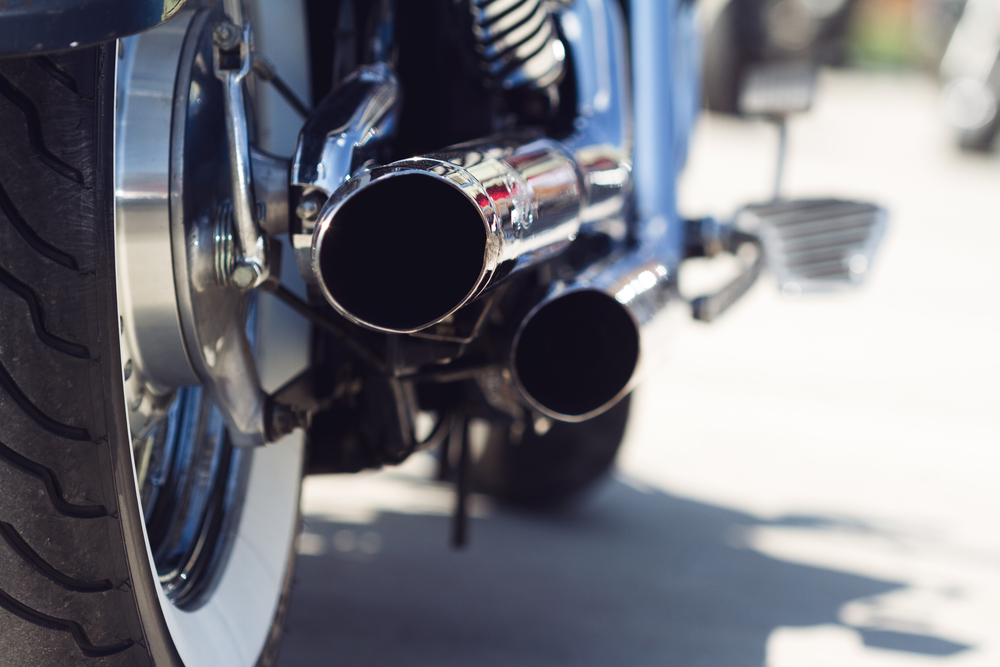
Boosting your bike’s speed involves several key modifications. Upgrading the exhaust system can reduce weight and improve airflow, resulting in better performance. Installing a high-performance air filter allows for increased air intake, enhancing combustion efficiency. Read More.
20 Implications of Regulatory Changes on Fossil Fuel Companies

Companies must adapt by diversifying their energy portfolios and investing in sustainable practices to remain competitive. Here are some implications of regulatory changes on fossil fuel companies. Read More.
20 Key Signs Hybrid Cars Aren’t the Right Purchase for You

Hybrid cars offer many benefits, but they may not be the best choice for everyone. Before making a purchase, it’s important to consider whether a hybrid fits your lifestyle and driving habits. Read More.














